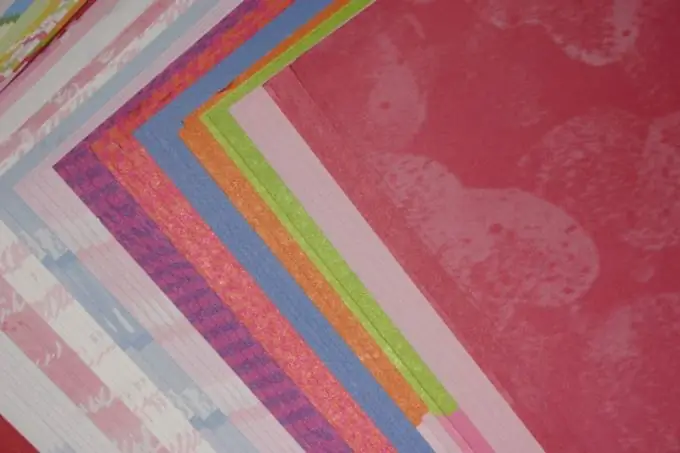Applique work is akin to a mosaic. A complex picture is obtained from simple shapes that need to be sewn on or glued on. It is better to start with a colored paper applique. The caterpillar can be made from circles or ovals.

What is needed for this
For applique work, of course, you will need colored paper. It is better to cut the elements of the picture from thin one-sided paper, and for the background you will need colored cardboard. Anything can be done from velvet paper. It is also good for the background, and the animals and birds cut from it will seem fluffy, the grass will be soft, and the flowers will look like real ones. The caterpillar can be made entirely of velvet paper, then it will appear fluffy. You will also need short, straight scissors, PVA glue, a paintbrush, oilcloth, napkin, and an eraser.
Decorate the background
The background sheet can be rectangular, square, round, oval, rhombus or other polygon. If you are not very experienced in applique art yet, give a direction for the caterpillar. It's just a curved line. In general, in applique classes it is better to do without a pencil and an eraser, but not everyone succeeds right away. Then you will still cover the line with the elements of the picture. You can lay a track for the caterpillar - stick a straight strip of yellow or brown color at the bottom of the sheet. The background can be more complex - for example, it can consist of individual leaves or blades of grass. But in any case, you need to arrange it before you start gluing the caterpillar.
Caterpillar elements
For the caterpillar, you will need a few circles or ovals. Cut a strip of colored paper. Fold it up like an accordion. Cut out many circles at once. It's okay that they turn out to be a little uneven - in nature, absolutely regular shapes are not so common. In this case, you should not use a compass. As a last resort, you can outline a circle or oval with a pencil.
Lay out the drawing
Place the circles close to each other on the line. There should be no gaps. Gently smear the back of the first circle with glue, put the fragment back in place and press with a napkin. PVA glue does not leave traces after drying. Glue all the circles in the same way. Determine where your caterpillar will have its head. Cut out a small black or brown circle and make an eye.
Torn applique
The caterpillar will look very interesting if its elements are not cut, but cut off. This type of application takes a little longer, but it is extremely useful for the child, since it develops fine motor skills of the hands. Cut thin paper into squares. Mark a circle on the back of each with a thin line. Tear off each piece. Stick on paper in the same way as in the previous case. The eyes can be cut out.






